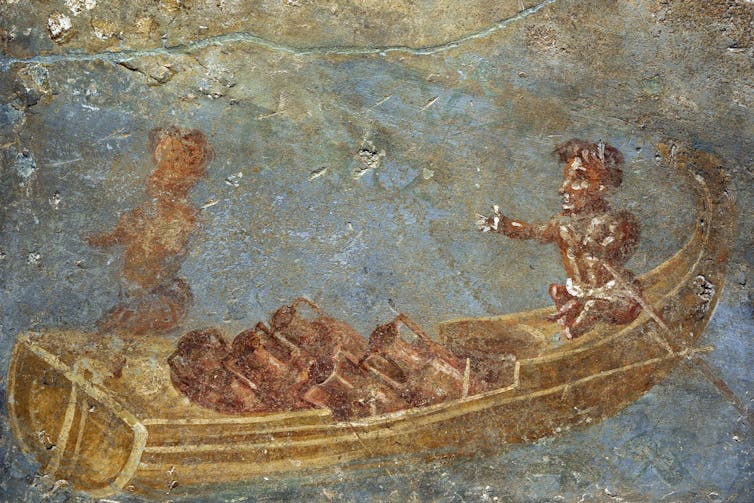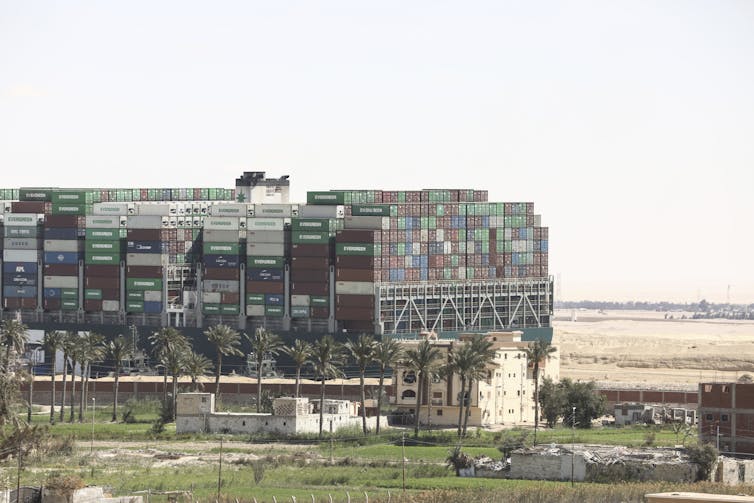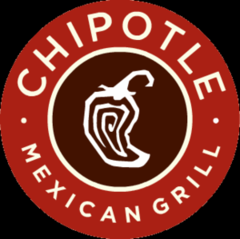Global shortage of shipping containers highlights their importance in getting goods to Amazon warehouses, store shelves and your door in time for Christmas

Anna Nagurney, University of Massachusetts Amherst
Take a look around you.
Perhaps you're snacking on a banana, sipping some coffee or sitting in front of your computer and taking a break from work to read this article. Most likely, those goods - as well as your smartphone, refrigerator and virtually every other object in your home - once were loaded onto a large container in another country and traveled thousands of miles via ships crossing the ocean before ultimately arriving at your doorstep.
Today, an estimated 90% of the world's goods are transported by sea, with 60% of that - including virtually all your imported fruits, gadgets and appliances - packed in large steel containers. The rest is mainly commodities like oil or grains that are poured directly into the hull. In total, about US$14 trillion of the world's goods spend some time inside a big metal box.
In short, without the standardized container, the global supply chain that society depends upon - and that I study - would not exist.
A recent shortage of these containers is raising costs and snarling supply chains of thousands of products across the world. The situation highlights the importance of the simple yet essential cargo containers that, from a distance, resemble Lego blocks floating on the sea.

Trade before the container
Since the dawn of commerce, people have been using boxes, sacks, barrels and containers of varying sizes to transport goods over long distances. Phoenicians in 1600 B.C. Egypt ferried wood, fabrics and glass to Arabia in sacks via camel-driven caravans. And hundreds of years later, the Greeks used ancient storage containers known as amphorae to transport wine, olive oil and grain on triremes that plied the Mediterranean and neighboring seas to other ports in the region.
Even as trade grew more advanced, the process of loading and unloading as goods were transferred from one method of transportation to another remained very labor-intensive, time-consuming and costly, in part because containers came in all shapes and sizes. Containers from a ship being transferred onto a smaller rail car, for example, often had to be opened up and repacked into a boxcar.
Different-sized packages also meant space on a ship could not be effectively utilized, and also created weight and balance challenges for a vessel. And goods were more likely to experience damage from handling or theft due to exposure.
A trade revolution
The U.S. military began exploring the use of standardized small containers to more efficiently transport guns, bombs and other materiel to the front lines during World War II.
But it was not until the 1950s that American entrepreneur Malcolm McLean realized that by standardizing the size of the containers being used in global trade, loading and unloading of ships and trains could be at least partially mechanized, thereby making the transfer from one mode of transportation to another seamless. This way products could remain in their containers from the point of manufacture to delivery, resulting in reduced costs in terms of labor and potential damage.
In 1956 McLean created the standard cargo container, which is basically still the standard today. He originally built it at a length of 33 feet - soon increased to 35 - and 8 feet wide and tall.
This system dramatically reduced the cost of loading and unloading a ship. In 1956, manually loading a ship cost $5.86 per ton; the standardized container cut that cost to just 16 cents a ton. Containers also made it much easier to protect cargo from the elements or pirates, since they are made of durable steel and remain locked during transport.
The U.S. made great use of this innovation during the Vietnam War to ship supplies to soldiers, who sometimes even used the containers as shelters.
Today, the standard container size is 20 feet long, eight feet wide and nine feet tall - a size that's become known as a "20-foot-equivalent container unit," or TEU. There are actually a few different standard sizes, such as 40 feet long or a little taller, though they all have the same width. One of the key advantages is that whatever size a ship uses, they all, like Lego blocks, fit neatly together with virtually no empty spaces.
This innovation made the modern globalized world possible. The quantity of goods carried by containers soared from 102 million metric tons in 1980 to about 1.83 billion metric tons as of 2017. Most of the container traffic flows across the Pacific Ocean or between Europe and Asia.

Ships get huge
The standardization of container sizes has also led to a surge in ship size. The more containers packed on a ship, the more a shipping company can earn on each journey.
In fact, the average size of a container ship has doubled in the past 20 years alone. The largest ships sailing today are capable of hauling 24,000 containers - that's a carrying capacity equivalent to how much a freight train 44 miles long could hold. Put another way, a ship named the Globe with a capacity of 19,100 20-foot containers could haul 156 million pairs of shoes, 300 million tablet computers or 900 million cans of baked beans - in case you're feeling hungry.
The Ever Given, the ship that blocked traffic through the Suez Canal for almost a week in March 2021, has a similar capacity, 20,000 containers.
In terms of cost, imagine this: The typical pre-pandemic price of transporting a 20-foot container carrying over 20 tons of cargo from Asia to Europe was about the same as an economy ticket to fly the same journey.
Cost of success
But the growing size of ships has a cost, as the Ever Given incident showed.
Maritime shipping has grown increasingly important to global supply chains and trade, yet it was rather invisible until the logjam and blockage of the Suez Canal. As the Ever Given was traversing the narrow 120-mile canal, fierce wind gusts blew it to the bank, and its 200,000 tons of weight got it stuck in the muck.
About 12% of the world's global shipping traffic passes through this canal. At one point during the blockage, at least 369 ships were stuck waiting to pass through the canal from either side, costing an estimated $9.6 billion a day. That translates to $400 million an hour, or $6.7 million a minute.
[Over 110,000 readers rely on The Conversation's newsletter to understand the world. Sign up today.]
Ship-building companies continue to work on building ever larger container vessels, and there's little evidence this trend will stop anytime soon. Some experts forecast that ships capable of carrying loads 50% larger than the Ever Given's will be plying the open seas by 2030.
In other words, the shipping container remains more popular - and in demand - than ever.
This is an updated version of an article originally published on April 5, 2021.![]()
Anna Nagurney, Eugene M. Isenberg Chair in Integrative Studies, University of Massachusetts Amherst
This article is republished from The Conversation under a Creative Commons license. Read the original article.
For the 5 Most Fascinating Stories in Franchising, a weekly report, click here & sign up.



Joe Caruso Did an FDD - Franchise Disclosure Document tell enough about the franchise system's supply chain sourcing & standards?
Shawn SpencerJoe thanks for posting this.
When franchise concepts start evaluating local supply chain, as did Chipotle in 2008, the variables become very complicated. The new buzz of "Locally Grown" can be a risk when the due diligence is left to the the sourcing executive alone. Locally grown food can actually contain more pesticides, toxins, and genetically modified produce with no validation of safety and crop lot tracking.
Most small franchise companies rely on the main line suppliers to fix this problem and don't have the budget to do research.
As millennials demand cleaner food supply, the local organic/naturally certified regional farms and suppliers will be the future of clean food/safety for restaurants. The brands that embrace this will have greater odds of success even though its more challenging.
The FDD would be a great place to start to bolster transparency in supply chain. The Next Gen of franchisees will certainly demand the transparency from farm to franchise.
Joe CarusoMy pleasure Shawn.
From a risk standpoint the current FDD regime doesn't say much of about the supply chain other than telling prospective franchise owners the franchisor's purchasing requirements and how to get a new supplier reviewed.
It could be much better.
Michael (Mike) Webster Chipotle would do well to review the history of hamburger, and the creation of standards and policing by Kroc, McDonalds and GFD in the early 1960's.
https://www.franchise-info.ca/supply_chain/2015/12/franchisor-standards---a-strategic-analysis-problem.html#.Vm7dNBqDFHw
Shawn SpencerI Agree. Many times we also see disconnects between the FDD & FA language specifically inserted for protection related to the Ops Manuals that go uncheck or get updated over time with the lack of legal review. The other real culprit is the lack of adoption from ops manual standards to training implementation. Chiplotle and others should remember and review what happen to Jack and the Box in the early 90's and their recovery.
Joe Caruso Yes the misalignment of FA and operations manual is more likely to happen with early stage startup franchisors.
Michael (Mike) WebsterHere in another aspect to the problem: lack of use of proper checklists.
https://www.linkedin.com/pulse/chipotles-woes-could-happen-any-us-thomas-yionoulis-mba?trk=hb_ntf_MEGAPHONE_ARTICLE_POST
Daniel BlumenthalI would also say that what happened to Chipotle can happen to any franchise that does not control its entire supply chain in a seed-to-table silo (which is impossible for anyone but maybe the largest franchises). We all rely heavily on our supply chain partners, which is why we use such care in selecting those relationships
Joe CarusoHi Jeff Nave what do you think about this?
Michael (Mike) Webster@Daniel - what responsibility do you put on your franchise operators to test the supply chain safety & what tools do you both require and recommend that they use?
Daniel BlumenthalMike, there are detailed practices with regard to checking product upon receipt, and food safety protocols that help identify when to stop using a product. But from what I understand, this was a problem with the supply that might not have been detectable at the store level. Lettuce that is tainted with e-coli, as I understand it, is something that has to be caught at the farm/distributor level. We seek out trustworthy food distributors and establish those relationships.
Michael (Mike) WebsterDaniel, and what is your view about this lengthy piece in Bloomberg?
http://www.bloomberg.com/features/2015-chipotle-food-safety-crisis/